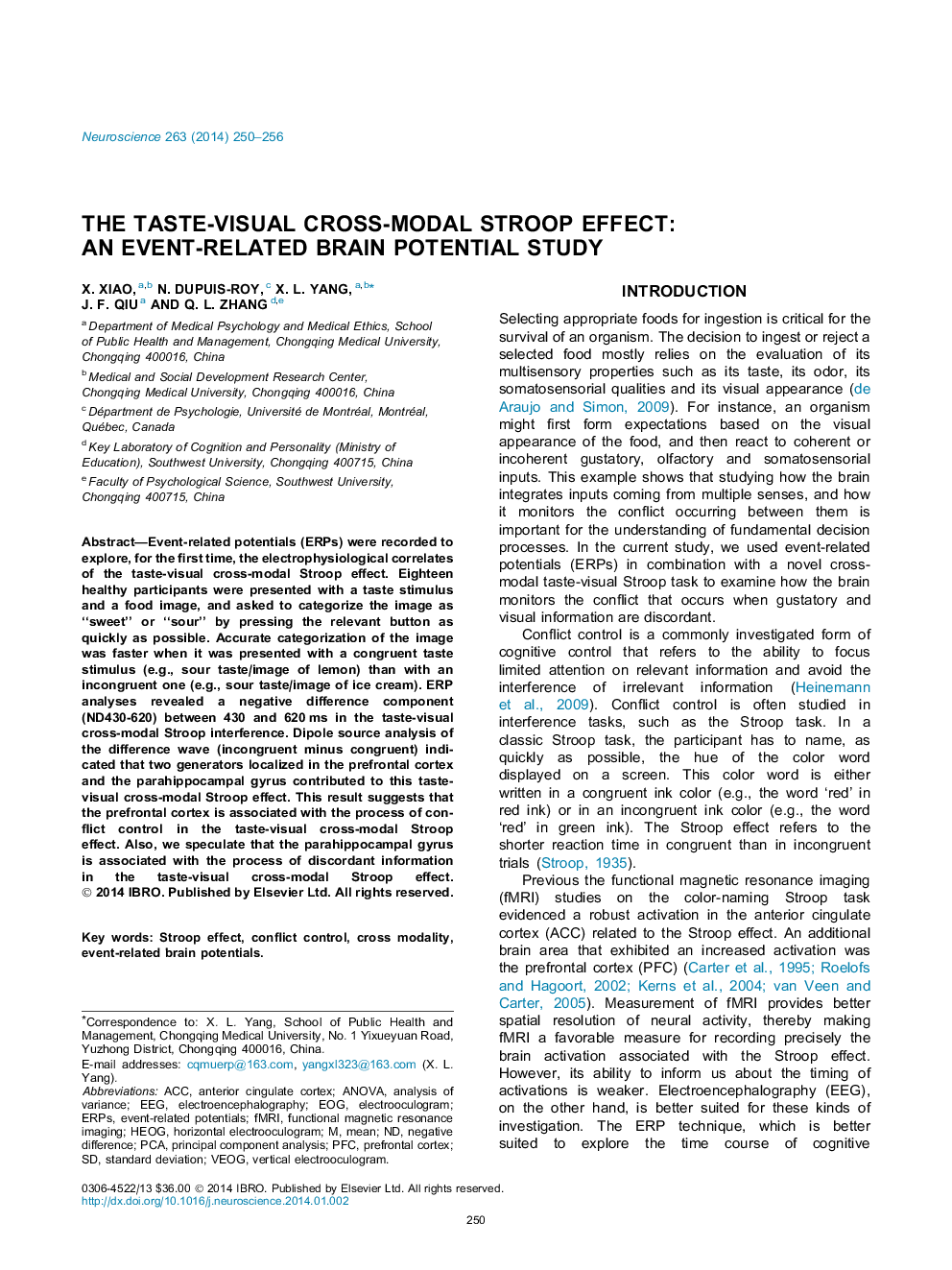| کد مقاله | کد نشریه | سال انتشار | مقاله انگلیسی | نسخه تمام متن |
|---|---|---|---|---|
| 4337749 | 1614813 | 2014 | 7 صفحه PDF | دانلود رایگان |
• The taste-visual Stroop effect was discovered for the first time.
• The effect refers to an increase in RT when the taste and the flavor of food in image do not match.
• ERP analyses revealed a negative difference component (ND430-620) in this effect.
• PFC and parahippocampal gyrus contributed to the taste-visual Stroop effect.
Event-related potentials (ERPs) were recorded to explore, for the first time, the electrophysiological correlates of the taste-visual cross-modal Stroop effect. Eighteen healthy participants were presented with a taste stimulus and a food image, and asked to categorize the image as “sweet” or “sour” by pressing the relevant button as quickly as possible. Accurate categorization of the image was faster when it was presented with a congruent taste stimulus (e.g., sour taste/image of lemon) than with an incongruent one (e.g., sour taste/image of ice cream). ERP analyses revealed a negative difference component (ND430-620) between 430 and 620 ms in the taste-visual cross-modal Stroop interference. Dipole source analysis of the difference wave (incongruent minus congruent) indicated that two generators localized in the prefrontal cortex and the parahippocampal gyrus contributed to this taste-visual cross-modal Stroop effect. This result suggests that the prefrontal cortex is associated with the process of conflict control in the taste-visual cross-modal Stroop effect. Also, we speculate that the parahippocampal gyrus is associated with the process of discordant information in the taste-visual cross-modal Stroop effect.
Journal: Neuroscience - Volume 263, 28 March 2014, Pages 250–256
